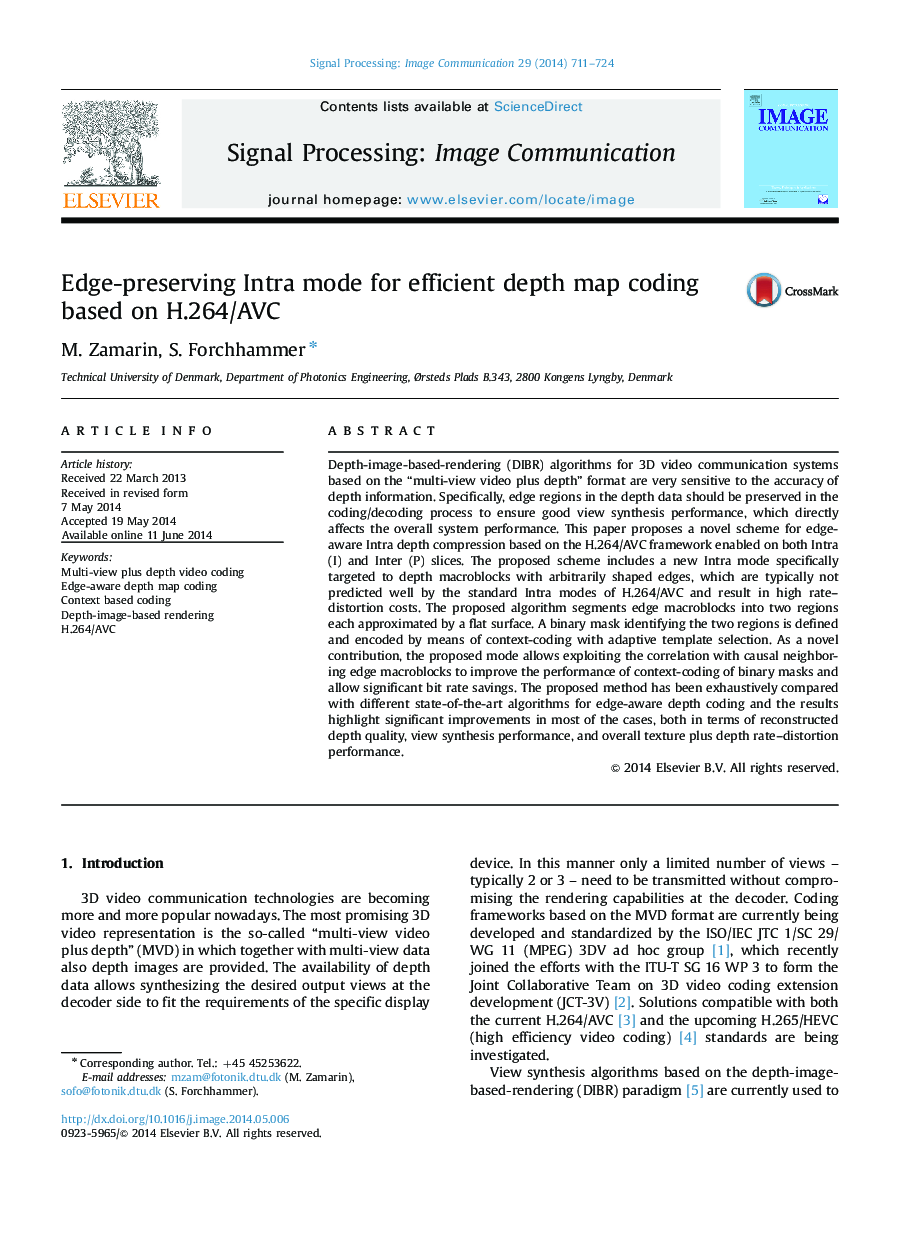| Article ID | Journal | Published Year | Pages | File Type |
|---|---|---|---|---|
| 536881 | Signal Processing: Image Communication | 2014 | 14 Pages |
•A new Intra mode for depth coding is proposed.•Edge macroblocks are bi-partitioned and partitions approximated by flat surfaces.•Edge information is predictively encoded by means of context based coding.•Significant coding gains over H.264/AVC and state-of-the-art methods are observed.
Depth-image-based-rendering (DIBR) algorithms for 3D video communication systems based on the “multi-view video plus depth” format are very sensitive to the accuracy of depth information. Specifically, edge regions in the depth data should be preserved in the coding/decoding process to ensure good view synthesis performance, which directly affects the overall system performance. This paper proposes a novel scheme for edge-aware Intra depth compression based on the H.264/AVC framework enabled on both Intra (I) and Inter (P) slices. The proposed scheme includes a new Intra mode specifically targeted to depth macroblocks with arbitrarily shaped edges, which are typically not predicted well by the standard Intra modes of H.264/AVC and result in high rate–distortion costs. The proposed algorithm segments edge macroblocks into two regions each approximated by a flat surface. A binary mask identifying the two regions is defined and encoded by means of context-coding with adaptive template selection. As a novel contribution, the proposed mode allows exploiting the correlation with causal neighboring edge macroblocks to improve the performance of context-coding of binary masks and allow significant bit rate savings. The proposed method has been exhaustively compared with different state-of-the-art algorithms for edge-aware depth coding and the results highlight significant improvements in most of the cases, both in terms of reconstructed depth quality, view synthesis performance, and overall texture plus depth rate–distortion performance.
